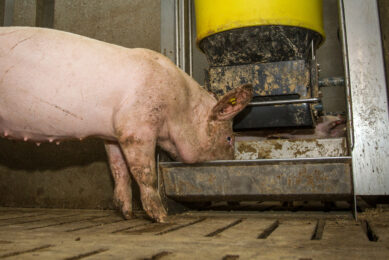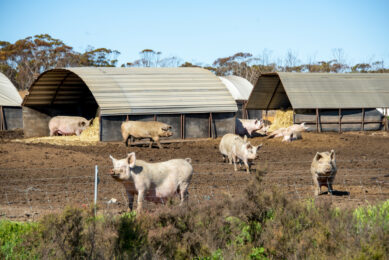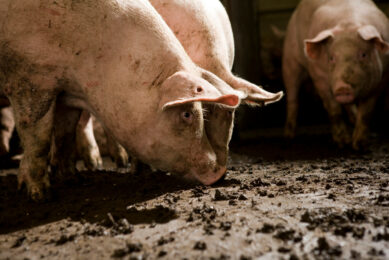Farm visit – Manure separation: Vital pigs and additional money
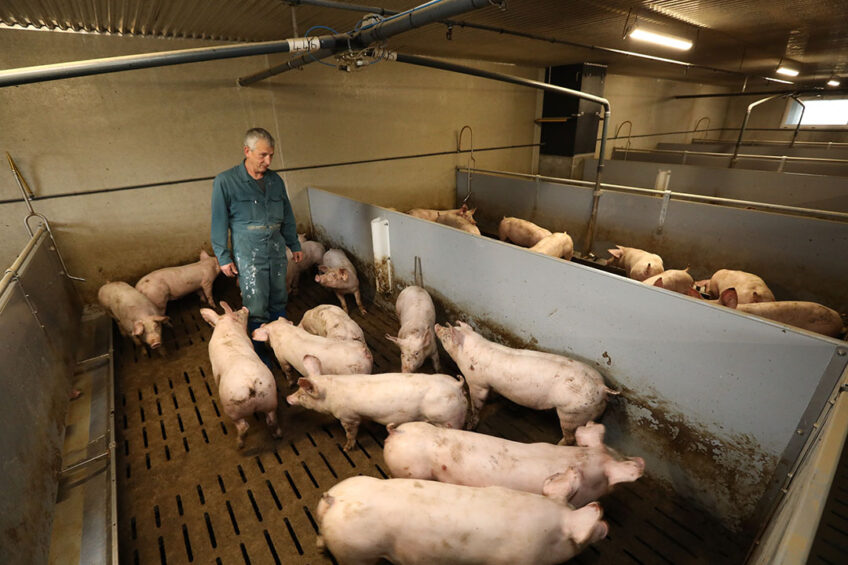
Pig producer Patrick Talibart has been working with Cooperl’s Trac system for just over a year. He is pleased with how it works, and the manure makes him good money.
Pig producer Patrick Talibart is more than happy with his finisher pig house and the daily removal of manure – a construction that is just over a year old. At the time of the visit, the fourth round of pigs were occupying the pig house, and technical results are positive, he says. Growth of the pens with boars and gilts is 896 g/day on average, feed conversion is 2.43, and he sends his pigs for slaughter at 123 kg. The percentage of tainted carcasses is 2.07. There is 61.66 mm of muscle and 12.54 mm of backfat on the boars. With the gilts, those figures are 61.04 mm muscle and 12.45 mm of backfat.
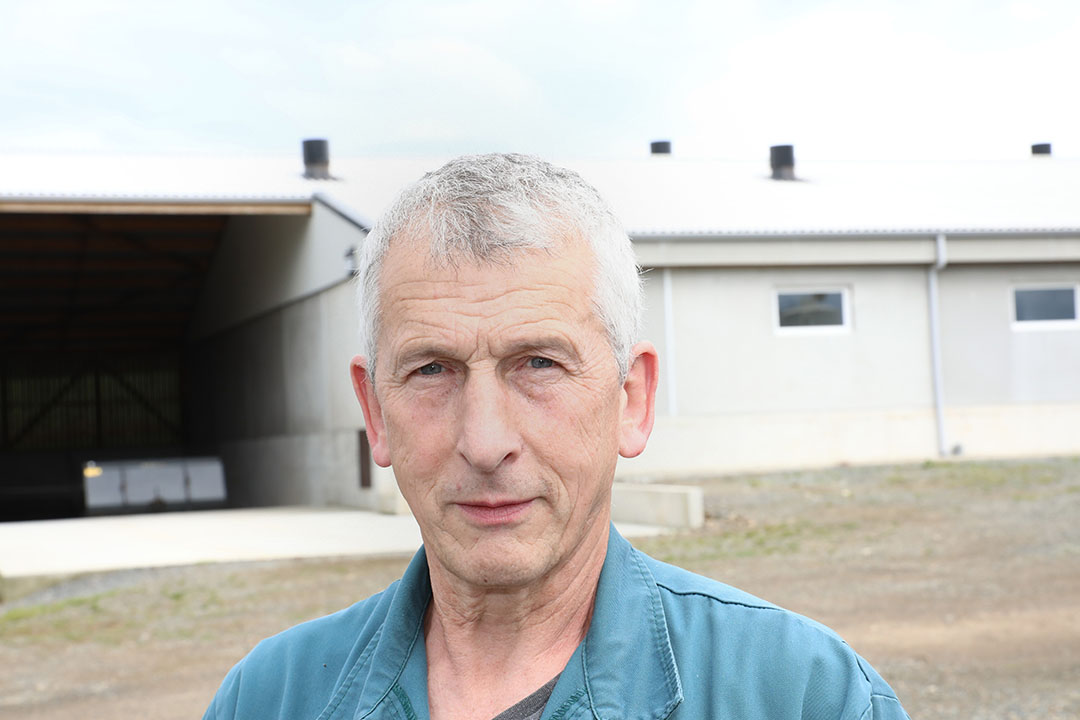
Trac technology: not much attention needed
The Trac technology, developed and shared by French pig cooperative Cooperl, is working well. Talibart’s farm belongs to Cooperl, and he opted to have the manure-separating technology installed in the new pig house. Talibart says the technology does not require a lot of attention. He says, “I do check from time to time whether the cables of the manure slides still have the right tension. Plus I often add a bit of oil to the rotating parts. But that’s about it. The cables of the manure slides are made of nylon and they can handle a traction weighing 6,000 kg. They manage well.”
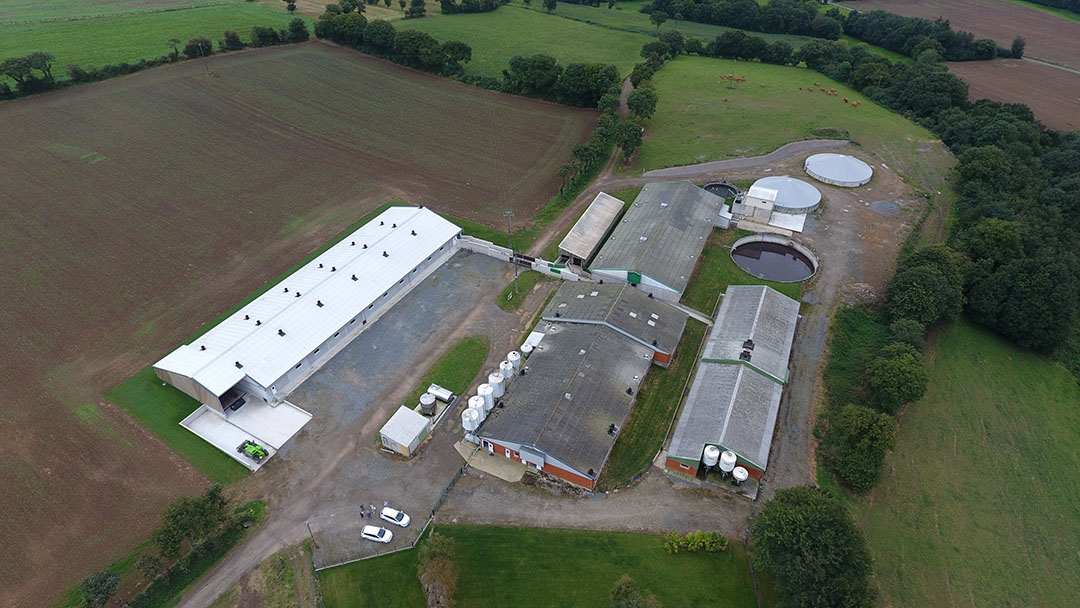
The pig house has capacity for 1,000 animals, divided over 6 departments. Along the cental wall is a corridor. The pigs are given liquid feed from a long trough; the flooring is completely slatted. Fresh air is delivered to the pigs through the ceiling, which is the only option considering that below the pigs are the manure slides.
Better pig house climate
Talibart chose the Trac system for 3 reasons.
- He needs to get rid of the phosphates on his farm. The most inexpensive solution is to have the thick fraction picked up, without prior separation being necessary.
- The pig house climate is better with a daily round of manure removal. Trac, in combination with a completely slatted floor, halves the NH3 emissions.
- Experience shows that in France, societal acceptance of this type of pig house is better. For this type of manure-low building, the procedure to obtain a permit is usually shorter compared to for a regular farm.
Vital pigs
The pigs appear to do well in the Trac pig house. There is not a lot of manure to be seen, as it is an entirely slatted floor. The air inside the pig house is considerably fresher because of the manure slides. About 6 times every day, the thick fraction is pushed away from underneath the pigs. For the first weeks after the introduction of the animals into the finisher house, the manure slide operates twice a day. Just after the introduction, the manure tends to be slightly thinner anyway, explains Talibart.
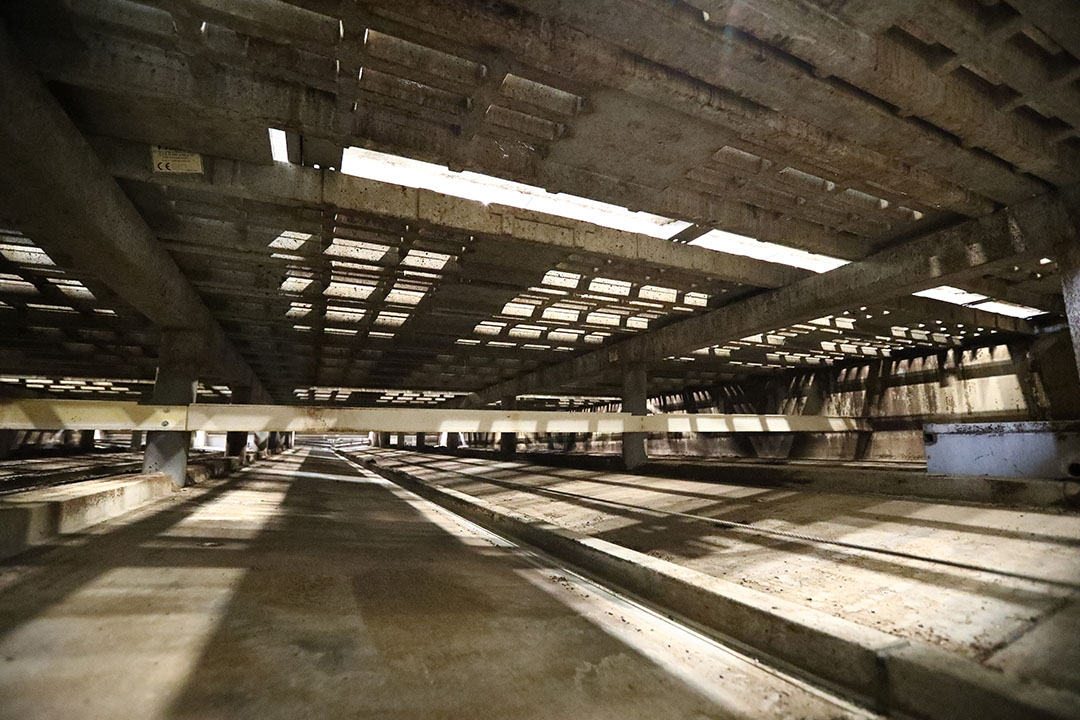
At the time of the visit, 1 of the 6 departments is empty and is being cleaned with a high pressure cleaner. It is clean, even underneath the slats. A few slats have been removed for cleaning purposes, making the Trac technology visible. The slides come in one piece and are made of stainless steel. Underneath each pen, there are two slides which are pulled in opposite directions by the same engine. That means that per department, two engines have been installed.
Manure makes the slides go smoothly
Talibart switches on the technology to demonstrate how it all works. Bit by bit, the manure slide is pulled through the rail. At 3 points, the manure slides touch the bottom. In a clean, dry department, the manure slide runs over the bare surface, making a scratching noise. In a normal situation, however, when there are pigs above the slats, the slides will be barely audible as the manure makes the slides go smoothly. The prefab elements supporting the slides are 2.5 m wide and 4.5 m long. That is the base size; they can come in longer or shorter sizes as required by the situation.
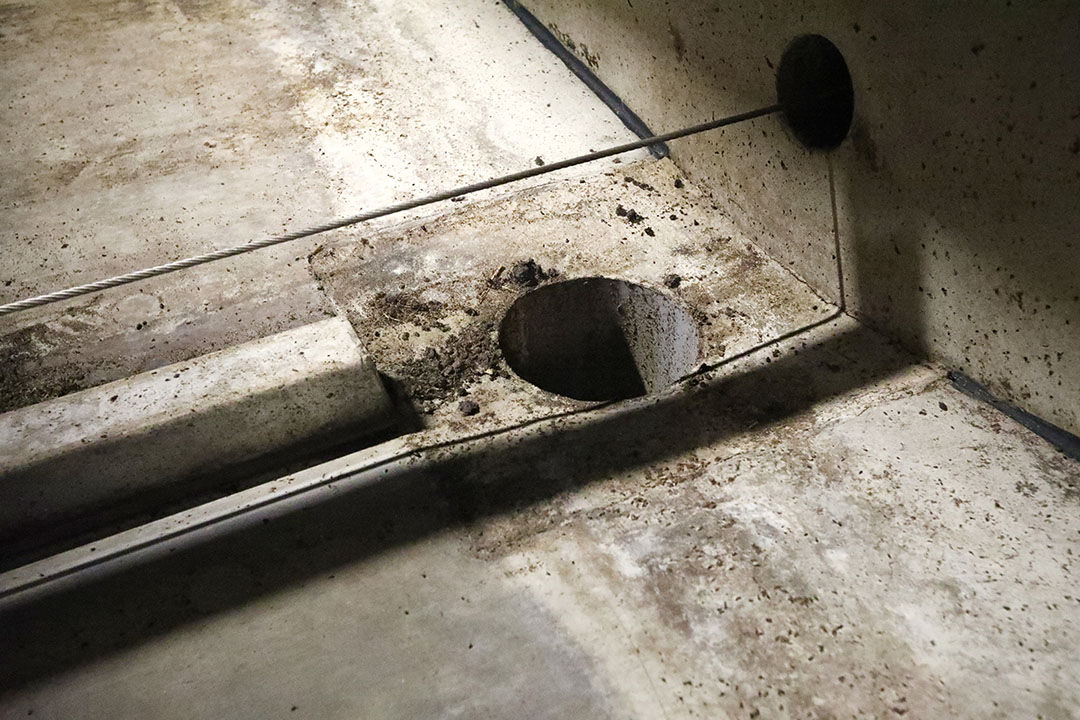
Urine washes away by itself, using gravity. Against the central wall and the outside wall are urine gutters. Outside the pig house, there are two pits where all urine is collected. Via those pits, the urine is pumped to a storage facility behind the farm. That is where the thin fraction is processed further using biological technologies. The majority of nitrogen in the manure eventually goes up in the air as harmless nitrogen gas. The leftover thin fraction is applied on the producer’s own land.
Cooperative helping out
With a sense of satisfaction, the pig producer walks through his pig house. He explains that he is producing for the antibiotics-free programme of Cooperl. To be eligible for that premium, he is no longer allowed to supply antibiotics from six weeks after the pigs’ birth. The premium is € 0.02/kg. Talibart claims that when calculated after 6 weeks of age, he manages to get 96% of the pigs to the slaughterhouse without having to give them antibiotics. Healthy pigs and good technical performance appear to go well together on this farm.
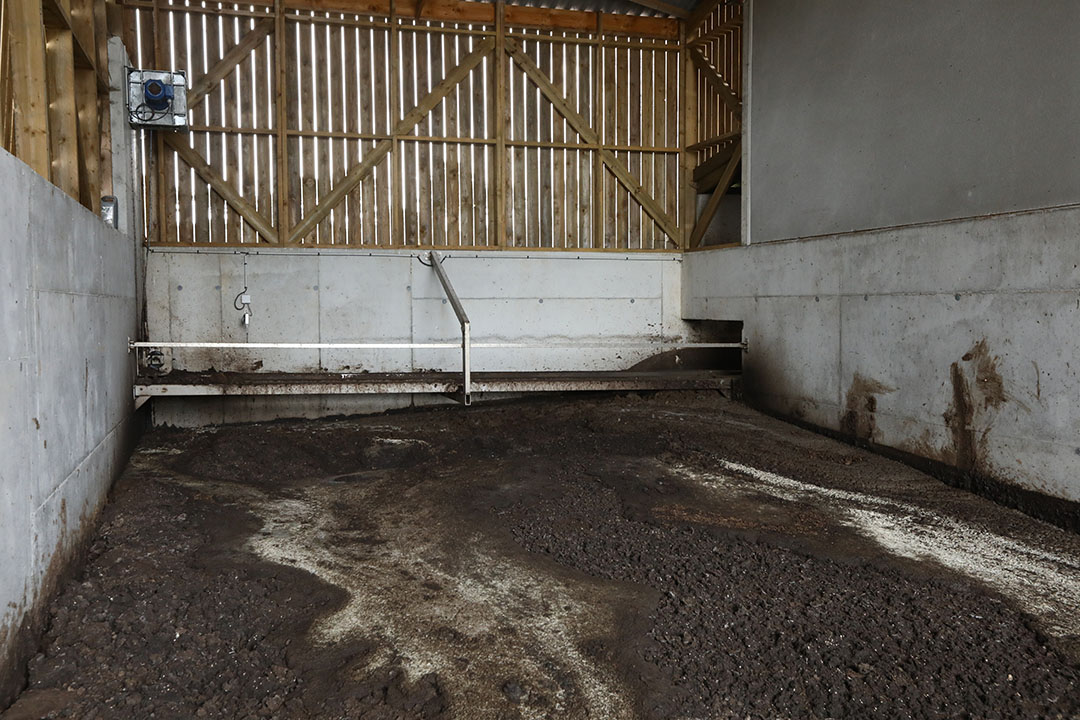
€ 20 per tonne for thick fraction
The manure’s thick fraction will yield about € 20 per tonne; it gets picked up for that price. The key condition for getting this price is a dry matter percentage of 23 or higher. At his liquid-fed facility, he is very nearly making that percentage; he reached 22% in the first year. Additional costs of Trac are € 150 per place for finisher pigs, provided that there is a completely slatted floor. Those additional costs are initially paid by Cooperl, and the loan is financed through deductions from the manure revenues. Talibart is happy with that arrangement, as it helps him to get rid of his mineral surplus. The manure separation also occurs without additional work and does not require any additives.
And – last but not least – the pigs thrive.



